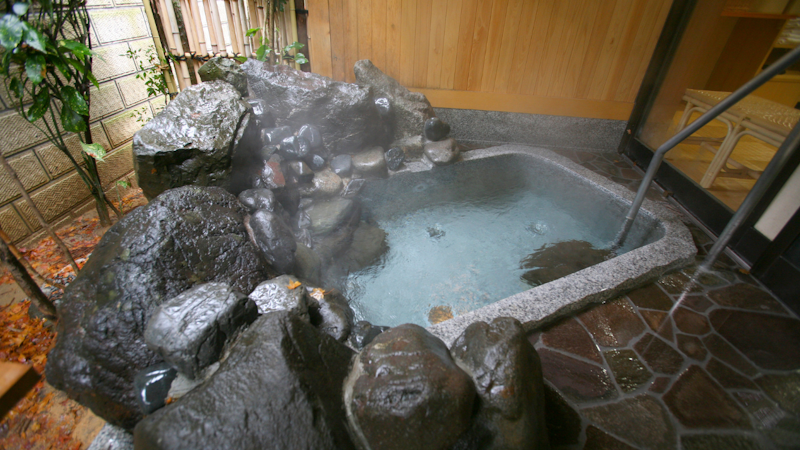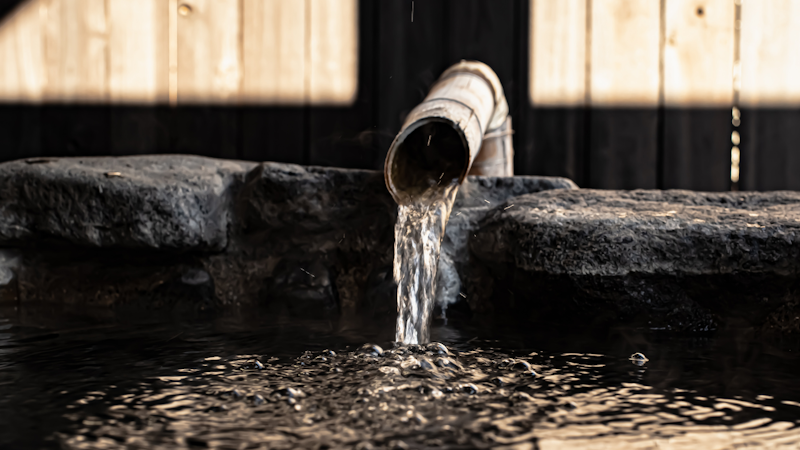Japan Travel Tips
Perfect Trip Guide
Japan Travel Tips
Perfect trip Guide
Onsen vs Sento: What is the Difference?
Travelers venturing to Japan, you may often hear the terms "Onsen" (温泉) and "Sento" (銭湯). But hold on, what exactly is the difference between them? Are they the same thing? Lately, you might also find the term "Super Sento."
"Onsen" and "Sento" might sound similar, but they're as different as sushi and sashimi. In short, Onsen is defined by its composition and temperature according to Japanese law, with no fixed bathing fee. Sento, on the other hand, has its bathing fee regulated by law to support local communities, with no specific rules regarding its spring components.
Understanding the difference between Onsen and Sento is crucial, especially for foreign tourists who want to enjoy a genuine Japanese bathing experience. Here, we'll delve into what each of them is and how they differ.
Onsen: Natural Hot Springs

First, let's talk about Onsen.
Visiting an Onsen is a must-do in Japan. It's not just about soaking in hot water; you're immersing yourself in a tradition dating back over a thousand years. Grab your towel, and get ready for one of the most relaxing experiences in Japan.
Legally Defined
According to Japanese hot spring law, to be considered an Onsen, it must meet specific criteria:
- The water must spring from underground and be at least 25 degrees Celsius.
- If it's less than 25 degrees, the water must contain specific mineral components.
These regulations protect the Onsen resources and ensure proper harvesting of natural springs.
Healing Benefits
Onsen water is famous for its therapeutic effects. Did you know that there's an actual medical treatment in Japan that involves bathing or drinking Onsen water?
The characteristics vary depending on the source, with different water qualities ranging from alkaline to acidic. Whether skin problems or muscle pains, mineral-rich water provides some relief.
Interestingly, neutral Onsen water is said to be the most common in Japan.
Bathing in Nature's Embrace
Onsen often takes place in scenic natural environments like picturesque mountains or beautiful coastal areas. Imagine relaxing in a warm open-air bath with a view of Mount Fuji. Wonderful, isn't it? Outdoor baths are one of Japan's unique pleasures.
Pricing
Onsen bathing fees are not uniformly set by Japanese law. Therefore, the cost of the Onsen experience may vary depending on the location and facility.
Typical bathing fees range from ¥500 ($3) to around ¥1,000 ($7). Compared to overseas Onsen facilities, that's a bargain! Also, in hotels with attached Onsen, the bathing fee is often free.
A Cultural Treasure
Japanese Onsen is not just a bath. It's an essential part of hospitality representing purity, harmony, and relaxation. It's no exaggeration to call it one of Japan's proud bathing cultures.
Also, Onsen is influenced by its location. Here are some famous Onsen locations to visit when touring Japan:
- Atami (Shizuoka Prefecture)
- Ito (Shizuoka Prefecture)
- Kinugawa (Tochigi Prefecture)
- Yugawara (Kanagawa Prefecture)
- Kusatsu (Gunma Prefecture)
- Nanki-Shirahama (Wakayama Prefecture)
- Beppu (Oita Prefecture)
- Arima (Hyogo Prefecture)
Some Onsen offer "mixed bathing," known as "Konyoku," where both genders can bathe together. While most Japanese Onsen are separated by gender, and mixed-gender Onsen have become rare, facilities that offer this adventurous option still exist. If you're feeling adventurous, give it a try!
Sento: A Hub of Japanese Community Life

Sento, or public bathhouses, stand as one of the central places in Japanese local communities. Unlike onsens, sento have a history of being spread for the purpose of improving the hygienic conditions of local residents. Hence, although sento usage fees are standardized by Japanese law, there's no requirement to include specific minerals, and they can be opened anywhere.
Regulation by Law
Sento are regulated under the Public Bathhouse Law in Japan. They aim to enhance the health and hygiene of the citizens, and distinctive features include preferential measures in water charges and taxation.
To protect the daily lives of the local residents, bathing fees are uniformly fixed by law.
Available Everywhere
From the heart of the cities to small rural towns, you'll find sento across Japan. They're communal gathering spots and spaces for interaction. While onsens often reside in natural surroundings, sento are prominent for their significant hygiene management and can even be found in commercial buildings.
Especially in urban areas, sento is what you're most likely to come across.
Traditional Experience
Sento offer an ordinary bathing experience, but often, traditional Japanese tiles and decorations characterize them. Additionally, many Japanese sento are equipped with saunas.
Another uniquely Japanese bath is the electric bath, where you can feel a tingling sensation from the electric currents. This current causes muscle contraction and promotes blood circulation. The synergistic effect with the hot water is also said to alleviate shoulder stiffness, muscle pain, and back pain.
You won't see this much abroad, so try it out if you come across an electric bath in Japan.
Pricing
Sento fees are super affordable! Though there may be differences depending on the area, you can bathe for about 500 yen ($3) per time. Japan's bathing fees are less than one-fifth of those in many famous overseas hot spring areas, making it incredibly reasonable!
Both tourists and locals can enjoy this accessible and fun space.
Most travelers will visit Tokyo, and Tokyo has many sentos. There are also many places where you can enjoy the old, good vibes of Japan. It's a perfect opportunity to relax and mingle with the locals.
Please note, typically in a sento, you wash your entire body at a washing station before entering the communal bath. Remember to follow the bathing rules and manners.
Super Sento: A Relaxing Space for Recreation and Well-being

A recent trend in Japan, "Super Sento," is gaining popularity. Unlike regular sento, Super Sento offers various types of baths, saunas, and relaxation spaces.
Super Sento is the perfect place to enjoy with family and friends. Many have restaurants and resting places on-site, allowing you to relax all day or enjoy delicious cuisine.
- Electric bath
- Carbonated bath
- Cascade bath
- Jacuzzi
These have recreational and restorative purposes, so unlike sento, there's no regulated pricing. Each facility can determine its unique usage fees. Both sento and Super Sento are essential parts of Japanese hospitality culture. Although different from onsen, they can offer an equally enjoyable experience.
Conclusion
Lastly, here's a table summarizing the main differences between onsen, sento, and Super Sento:
Item | Onsen | Sento | Super Sento |
|---|---|---|---|
Japanese | 温泉 | 銭湯 | スーパー銭湯 |
Source | Natural hot springs. Defined by the Onsen Law. | Not necessarily onsen. Groundwater or tap water used. | May use onsen. Various baths available. |
Temperature | 25°C or above, or containing specific components. | No temperature limit. | No temperature limit. |
Cultural Significance | Harmony with nature. Health & relaxation spot. | Part of the local community. | For entertainment & well-being. |
Price | Varies by facility and location. | Generally around 500 yen. | Facility-specific pricing. |
Features | Natural scenery, outdoor baths, diverse experiences. | Gathering spot for locals. | Electric baths, Jacuzzis, various recreational facilities. |
Onsen, sento, and Super Sento each reflect different aspects of Japan's bath culture. For tourists, understanding these differences is key to enjoying relaxing time during their stay in Japan.
There are charms in both onsen and sento. Onsen allows you to enjoy nature's bounty, while sento offers a space for community interaction. Both provide a wonderful experience to feel Japan's warm hospitality.
For tourists, understanding these differences will allow you to delve deeper into Japan's bath culture and enjoy it to the fullest. Whether you're in bustling Tokyo or a serene rural area, don't miss out on this unique aspect of Japanese culture.
